One of the enduring mysteries of the universe is the nature of matter—what are its basic constituents and how do they interact to form the elements and the properties we observe? The mission of the Nuclear Physics (NP) program is to solve this mystery by discovering, exploring, and understanding all forms of nuclear matter. Nuclear physicists seek to understand not just the familiar forms of matter we see around us, but also exotic forms such as those that existed in the first moments after the Big Bang and that exist today inside neutron stars. The aim is to understand why matter takes on the specific forms now observed in nature and how that knowledge can benefit society in the areas of commerce, medicine, and national security.
The quest to understand the properties of different forms of nuclear matter requires long-term support for both theoretical and experimental research efforts. Theoretical approaches are based on calculations of the interactions of quarks and gluons, which form protons and neutrons, using today’s most advanced computers. Other theoretical research models the forces between protons and neutrons and seeks to understand and predict the structure of nuclear matter. Experiments in nuclear physics use large accelerators that collide particles up to nearly the speed of light to study the structure of nuclei, nuclear astrophysics and to produce short-lived forms of matter for investigation. Nuclear physicists also use low-energy, precision nuclear experiments, many enabled by new quantum sensors, to search for a deeper understanding of fundamental symmetries and nuclear interactions. Comparing experimental observations and theoretical predictions tests the limits of our understanding of nuclear matter and suggests new directions for experimental and theoretical research.
Highly trained scientists who conceive, plan, execute, and interpret transformative experiments are at the heart of the NP program. NP supports these university and national laboratory scientists. We also support U.S. participation in select international collaborations and provide over 90 percent of the nuclear science research funding in the United States. The world-class scientific user facilities and associated instrumentation necessary to advance the U.S. nuclear science program are large and complex. NP supports four scientific user facilities: the Relativistic Heavy Ion Collider (RHIC) at Brookhaven National Laboratory (BNL); the Continuous Electron Beam Accelerator Facility (CEBAF) at Thomas Jefferson National Accelerator Facility (TJNAF); the Argonne Tandem Linac Accelerator System (ATLAS) at Argonne National Laboratory (ANL); and currently under construction the Facility for Rare Isotope Beams (FRIB) which will provide unprecedented opportunities to study the synthesis of the heavy elements in the cosmos. Each of these facilities has unique capabilities that advance NP’s scientific mission.
NP Areas
NP Science Highlights
-
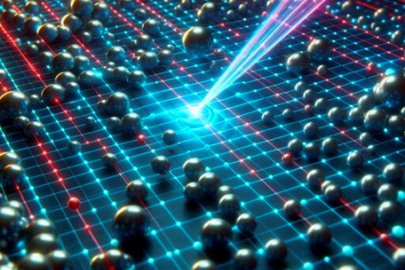 A new framework for quantifying uncertainties increases the predictive power of analog quantum simulations.
A new framework for quantifying uncertainties increases the predictive power of analog quantum simulations. -
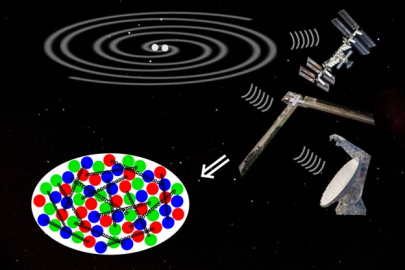 Requiring consistency between the physics of neutron stars and quark matter leads to the first astrophysical constraint on this exotic phase of matter.
Requiring consistency between the physics of neutron stars and quark matter leads to the first astrophysical constraint on this exotic phase of matter. -
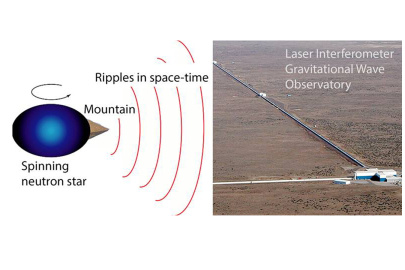 Extreme stars may have mountains like those on moons in our solar system. If so, they could produce detectable oscillations of space and time.
Extreme stars may have mountains like those on moons in our solar system. If so, they could produce detectable oscillations of space and time. -
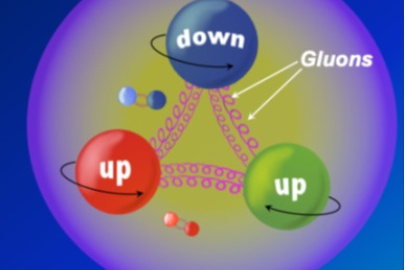 A new approach to applying quantum chromodynamics paves the way for a deeper understanding of the strong nuclear interaction.
A new approach to applying quantum chromodynamics paves the way for a deeper understanding of the strong nuclear interaction. -
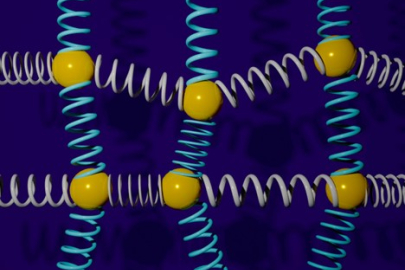 A new quantum algorithm speeds up simulations of coupled oscillators dynamics.
A new quantum algorithm speeds up simulations of coupled oscillators dynamics. -
New theory-based approach gives access to quarks’ tiny transverse motion within protons.
-
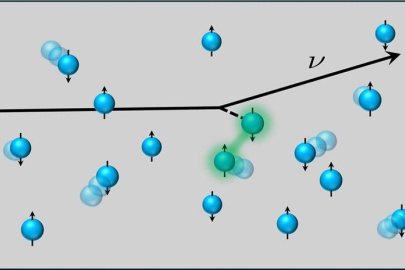 Improved Spin and Density Correlation Simulations Give Researchers Clearer Insights on Neutron StarsNew lattice simulations compute the spin and density correlations in neutron matter that affect neutrino heating during core-collapse supernovae.
Improved Spin and Density Correlation Simulations Give Researchers Clearer Insights on Neutron StarsNew lattice simulations compute the spin and density correlations in neutron matter that affect neutrino heating during core-collapse supernovae. -
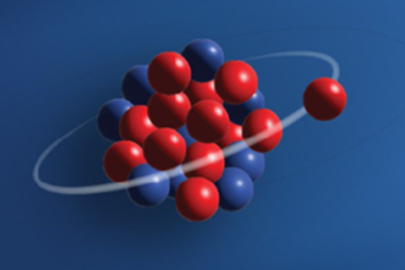 The Facility for Rare Isotope Beams enables a high-precision mass measurement at the edge of the nuclear chart.
The Facility for Rare Isotope Beams enables a high-precision mass measurement at the edge of the nuclear chart. -
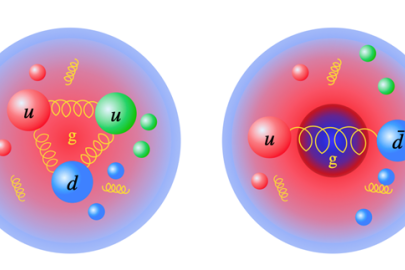 Nuclear theorists reveal mass distribution within the pion and the proton from first principle numerical calculations.
Nuclear theorists reveal mass distribution within the pion and the proton from first principle numerical calculations. -
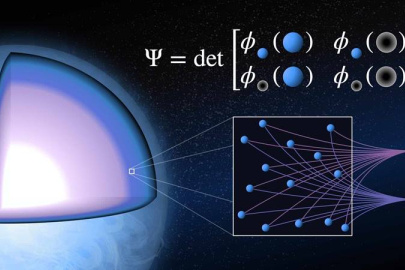 Scientists find evidence of superfluidity in low-density neutron matter by using highly flexible neural-network representations of quantum wave functions.
Scientists find evidence of superfluidity in low-density neutron matter by using highly flexible neural-network representations of quantum wave functions.
NP Program News
NP Research Resources
Contact Information
Nuclear Physics
U.S. Department of Energy
Germantown Building
1000 Independence Avenue., SW
Washington, DC 20585
P: (301) 903 - 3613
F: (301) 903 - 3833
E: sc.np@science.doe.gov

